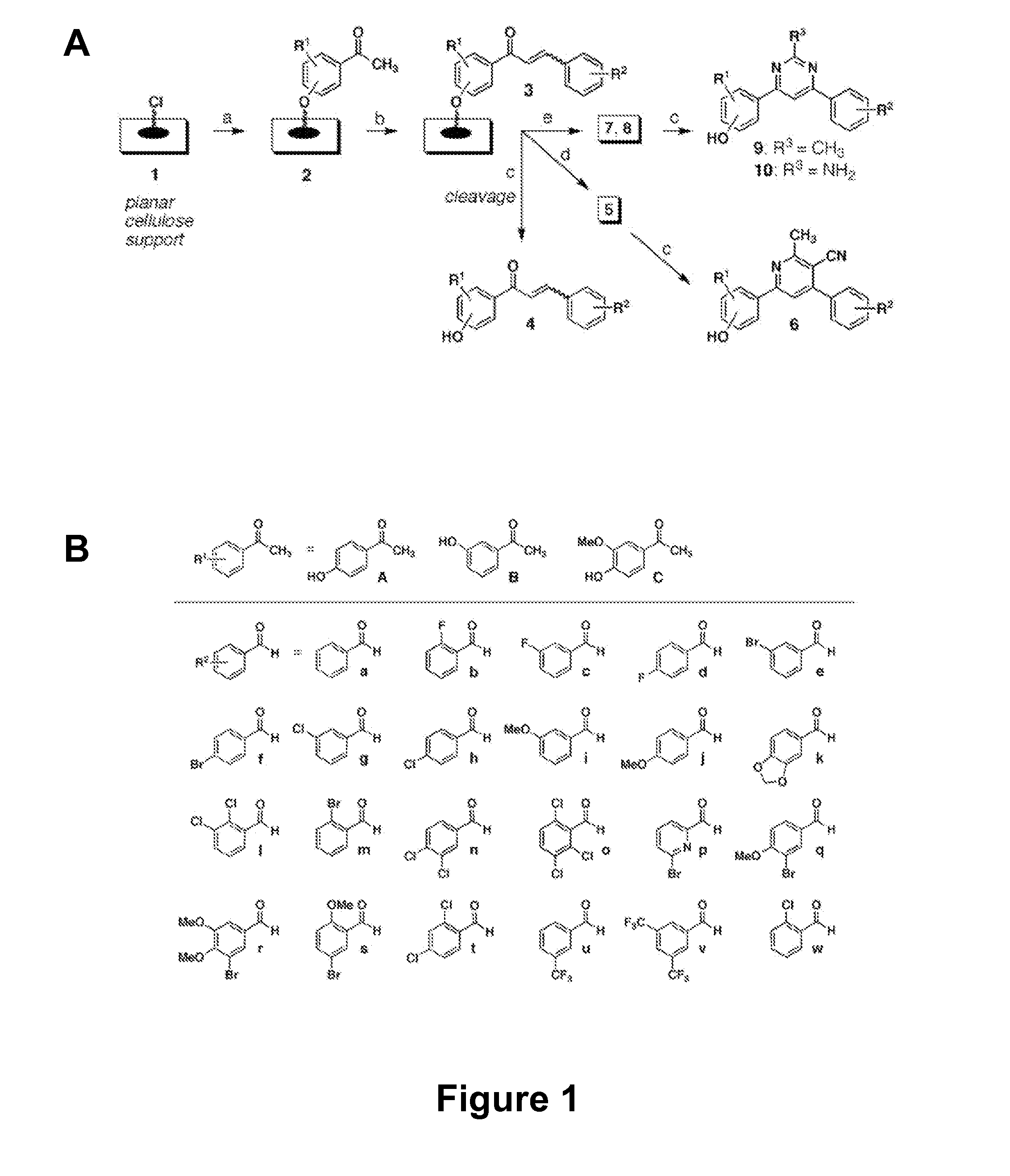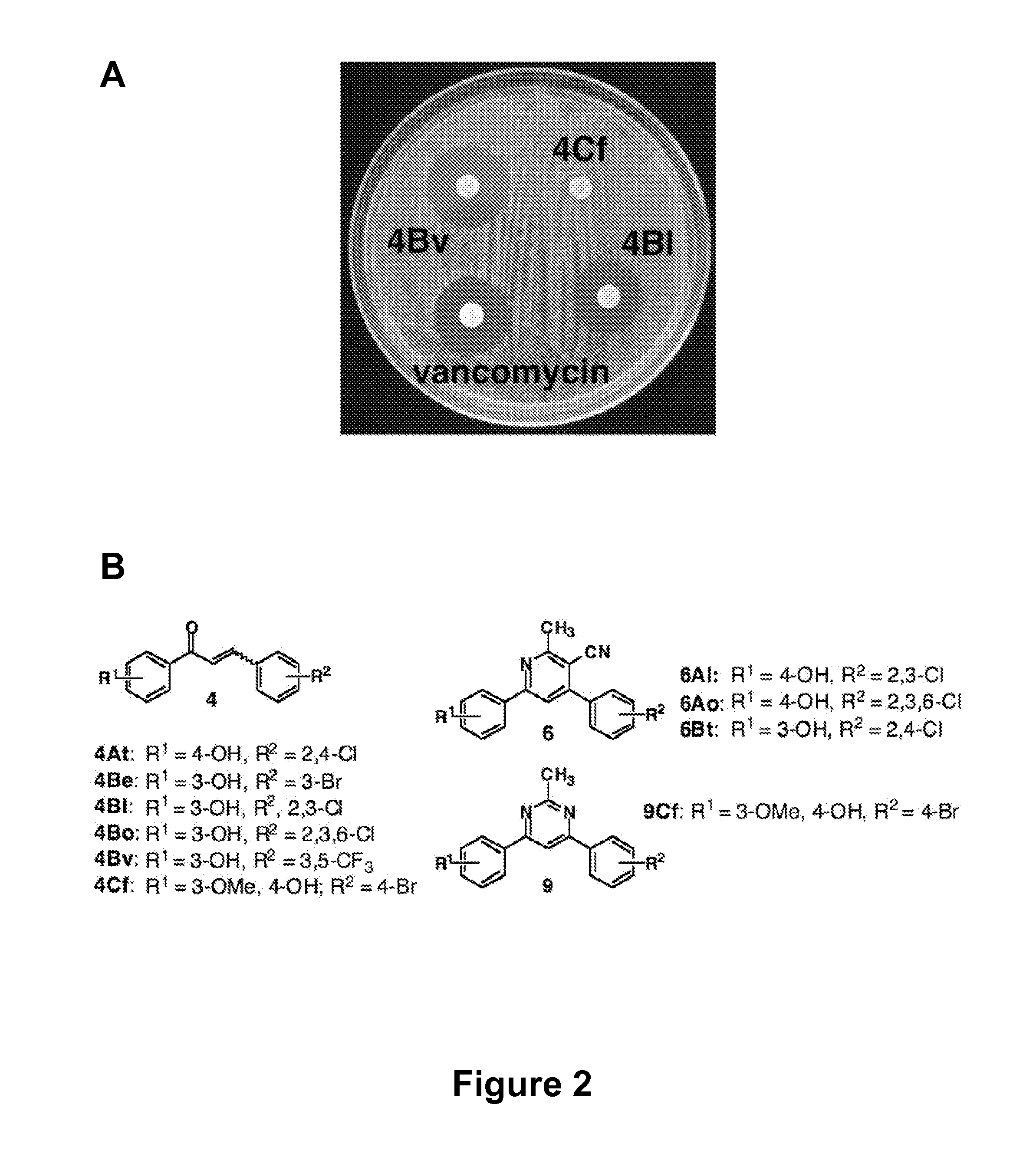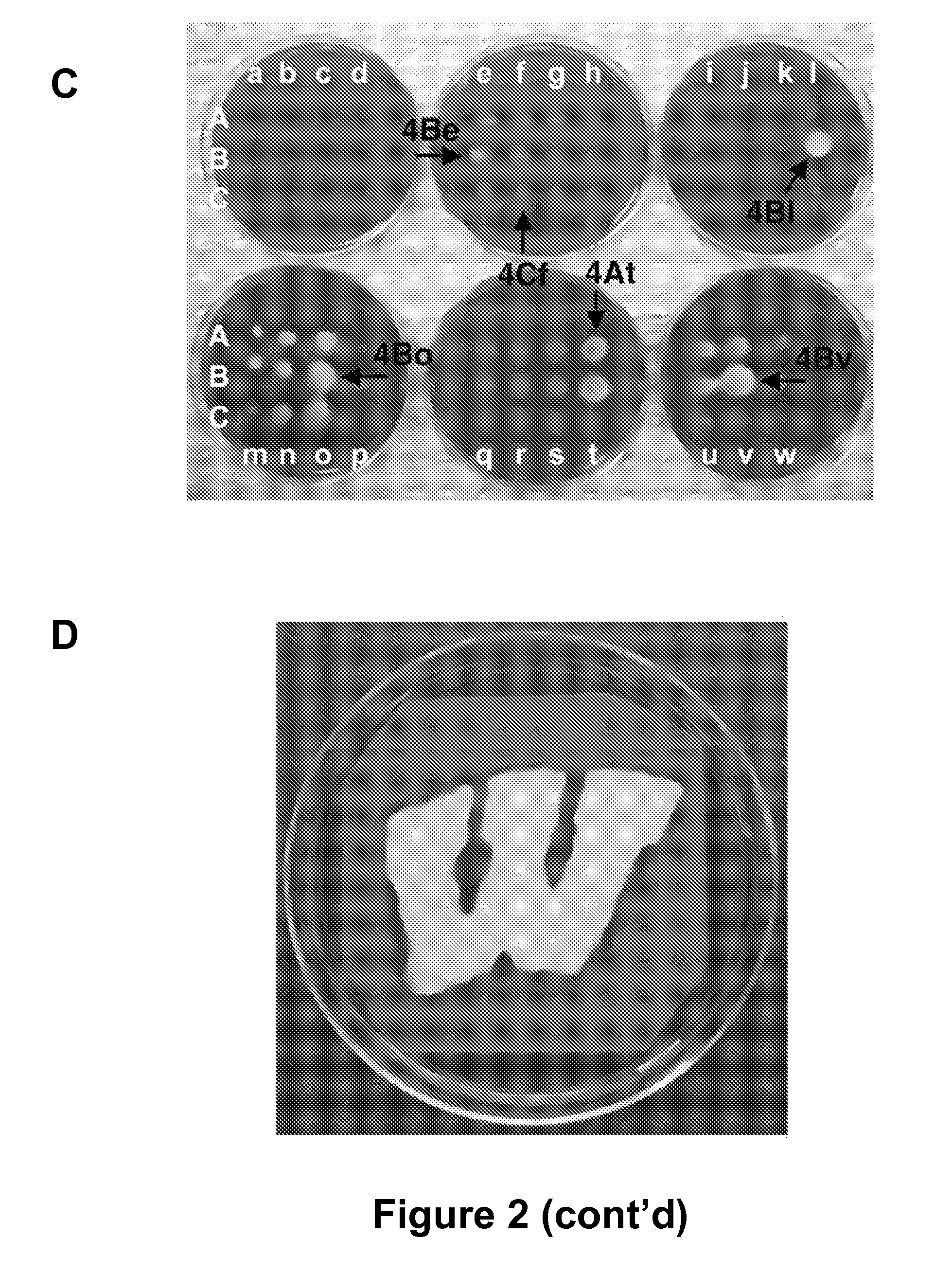Antibacterial agents and related screening methods using small molecule macroarrays
a microarray and antibacterial technology, applied in the preparation of antibacterial agents, biocide, carbonyl compounds, etc., can solve the problem of serious human life threat, bacterial strain resistance to antibacterial agents continues to erupt, etc., to achieve effective and biologically significant contact.
- Summary
- Abstract
- Description
- Claims
- Application Information
AI Technical Summary
Benefits of technology
Problems solved by technology
Method used
Image
Examples
example 1
Rapid Identification of Antibacterial Agents Effective Against Staphylococcus aureus Using Small Molecule Macroarrays
1.a. SUMMARY
[0114] There is an urgent, global need for the development of new antibacterial agents. We have applied the small molecule macroarray approach to the synthesis and screening of antibacterial compounds active against the Gram-positive pathogen Staphylococcus aureus. Several macroarrays of 1,3-diphenyl-2-propen-1-ones (chalcones), cyanopyridines, and pyrimidines were synthesized on a planar cellulose support system on the order of days. This support system was found to be highly compatible with antibacterial assay formats, including disk diffusion and agar overlay visualization methods. Further, sufficient compound was isolated from each spot of the macroarray for both compound characterization and minimum inhibitory concentration (MIC) estimation. Analysis of the small molecule macroarrays in these assays uncovered a set of antibacterial agents with novel...
example 2
Chalcones, Cyanopyridines, Methylpyrimidines and Aminopyrimidines Useful as Antibacterial Agents
[0256] The present invention generally provides antibacterial compounds and methods related to use of these antibacterial compounds. The compounds of the invention include chalcones, cyanopyridines, methylpyrimidines and aminopyrimidines, which are useful as antibacterial agents. These compounds may be synthesized and screened using macroarrays. In one exemplary embodiment, the present invention provides compounds having the Formula, I, II and III, as shown below:
wherein
is selected from the group consisting of
wherein
is selected from the group consisting of: [0257] and wherein R3 is CH3 or NH2.
[0258] In an preferred embodiment, the invention provides the following compounds, having the formula:
[0259] The invention also provides a method of use of a compound as an antibacterial agent, wherein the compound has a formula selected from the group consisting of:
wherein
is i...
example 3
Methods of Screening Compounds for Antibacterial Activity
[0260] The invention also provides a method of screening a compound for antibacterial activity. This method comprises the steps: (a) constructing a macroarray of the compound, wherein the macroarray comprises a first platform, a linker coupled to the first platform and the compound coupled to the linker; and (b) incubating the macroarray with a bacterial culture, whereby compounds having antibacterial activity exhibit a zone of inhibition.
[0261] In this method, the first platform is independently selected from the group consisting of cellulose, Teflon, glass and silicone. Other substrate known to one of ordinary skill in the art may be used for use as a platform in using similar methodology described here. Also as described above, in this method, the wherein the compound has a formula selected from the group consisting of:
wherein
is independently selected from the group consisting of
wherein
is independently selecte...
PUM
 Login to View More
Login to View More Abstract
Description
Claims
Application Information
 Login to View More
Login to View More - R&D
- Intellectual Property
- Life Sciences
- Materials
- Tech Scout
- Unparalleled Data Quality
- Higher Quality Content
- 60% Fewer Hallucinations
Browse by: Latest US Patents, China's latest patents, Technical Efficacy Thesaurus, Application Domain, Technology Topic, Popular Technical Reports.
© 2025 PatSnap. All rights reserved.Legal|Privacy policy|Modern Slavery Act Transparency Statement|Sitemap|About US| Contact US: help@patsnap.com



